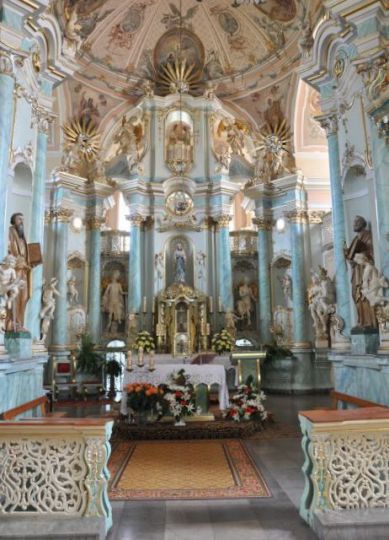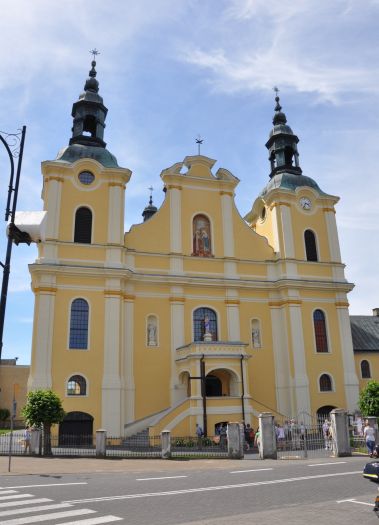
The county seat is on the Warta, about 120 km east of Poznań, on the way to Warsaw.
Hińcza of Rogowo, Starosta of Koło, brought the Bernardines to the city in 1466. Through the efforts of Anna, Duchess of Sochaczew, who lived in Koło castle at the time, the church and monastery were completed by 1482. The monastery was given a thorough overhaul in 1754-1764. In 1773-1783, it was demolished to the foundations of the church and rebuilt.
The Tsarist authorities made the monastery a state monastery as part of the repressive measures that followed the January Uprising of 1863. Bernardines from dissolved monasteries in the Russian partition were sent here. The monastery was only supposed to last until the death of the last monk but, as the last monk was still alive at independence in 1918, it was never closed. During WWII, the Germans used the church as a furniture storeroom and a garage while the monastery served as lodgings for German military police and civil servants. The church and monastery premises suffered major damage in 1945. The monks were already returning home at the beginning of that year.
The monastery belongs to the Franciscan Province of the Immaculate Conception of the Virgin Mary in Cracow, a reference to the tradition of the Bernardine Order.
The Visitation Church is a late-baroque, three-nave hall building. There are two towers crowned with openwork cupolas on the sides of the façade.
The monastery has a Gothic frame and was given its present baroque form during an 18th-century reconstruction. The building adjoins the church from the west and has four wings with an interior courtyard.









